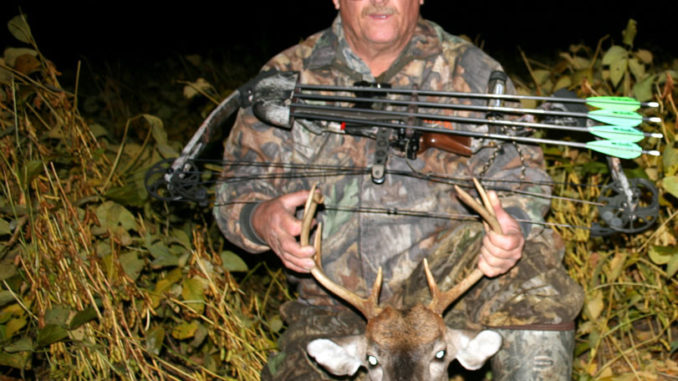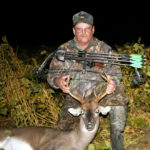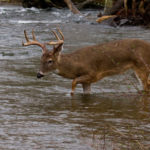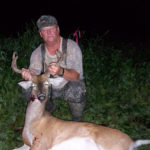
Find bucks still in summer patterns and take your best shot
Regardless of when deer begins in South Carolina — and opening day depends on where your deer stand is — hunters need an early season strategy based on the type of hunting you’ll be doing, as well as the particular sector of the state you hunt. But early season hunting, regardless of where you hunt in South Carolina, can have its rewards.
According to Charles Ruth, deer project coordinator for the S.C. Department of Natural Resources, the herd of deer in the state is in excellent and stable condition right now.
“In terms of numbers of deer, we’re in very good shape, with good numbers found throughout various sections of the state,” Ruth said. “Obviously, some areas will be better than others, but overall, in terms of numbers of deer, the 2013 season should open with plenty of opportunities for hunters to see and harvest deer.
“In addition, we’ve consistently seen a lot of big bucks come from many areas around the state in recent years,” Ruth said. “The big-buck harvest has certainly been on an upswing, and that adds to the enthusiasm for deer season to begin.
“Those first few days when deer have not been pressured by hunting generally make for good results for hunters. One issue for some hunters is that, very early in the season, they’ll see bucks that are legal, but not trophy bucks. Hunters need to have their minds set on what they want to harvest before the season.
“Also, for those hunting early, it’s important to remember that doe deer cannot be harvested until the middle of September at the earliest, regardless of where you hunt,” he said. “And even then, some areas are bowhunting only. Hunters need to simply read the rules for the area they plan to hunt during the early season.”
For many Lowcountry hunters, September means using both guns and bows.
Mike Cox of Awendaw, a veteran deer hunter said hunters know that they’ve got to do things entirely different to be successful, depending on the choice of weapon.
“For gun hunting, it’s a simple choice for me,” he said. “I prefer to set up in stands and have a fairly long shot at an unsuspecting deer. We’re fortunate in the area I hunt to have a lot of agriculture fields: beans, corn, peanuts and even cotton. The deer will be attracted to all these areas in big numbers early in the season. The key is to have stands set up where you can pick the right one based on the wind. If you don’t have a choice where the wind is in your favor, just don’t go hunting in that area. It’s a long season, and you don’t want to mess up a big buck right at the beginning. I don’t want to mess up an opportunity later on because of a poor choice based on wind direction.”
Cox said that sometimes the simple math of being high in a stand and a long distance to the target will negate a marginal wind. He said the problem with that plan is there is always a chance a buck will appear from a place you don’t expect.
“I try to have a good handle on where the deer will be coming from and select a stand a good distance away for gun hunting on an agriculture field,” he said. “But sometimes I get surprised and have a buck walk out very close to me. For that reason, I must play the wind right. I’ve had some nice shooter bucks slip out fairly close and from unexpected places. When hunting a large agriculture field, you never know for sure where they’re coming from.
“Plus, you need to decide before you go if you’re after any legal buck or are holding out for a trophy. Odds are good in this type of setting that you’ll see multiple bucks early in the season, but you may have to wait until very late in the evening to see a big buck, and that means you often have to pass smaller but legal bucks early in the evening. Think about that before you go, or the excitement of the moment will make the decision for you.”
Coxd said bowhunting is his passion, and the early season presents not only challenges, but also opportunities for the bowhunter.
“The wind has to be just right, but I love to have a stand at the edge of the swamp overlooking a planted field,” he said. “I’ll often pick a tree, especially for a pre-hung stand, that’s got a lot of foliage and hide the stand in as much natural cover as possible. Then clip a few shooting holes where I can get an arrow through. I’ll have this done before the day I hunt. On days I hunt in the hot early season, I want to expend as little energy as possible, to reduce sweating and just get into position and remain quiet and cool as possible.
“Scent is a key, since you’re normally 30 yards or so from a deer, so I try to have several stands ready,” he said. “Many of them will be trees that I have previously limbed, and I will sometimes slip into them during the afternoon with my climber and climb to where I’m covered by some limbs. I like this best, because deer will not have seen a stand of any type. One great place is close to the same areas where I see a lot of deer from a gun stand, except I have to get right on top of the deer. But with the right wind, that’s possible.”
Cox said that, regardless of where you hunt in early season, you’ve got to consider the wind, since heat and perspiration will be a factor. He said that early season deer will often be found in or directly adjacent to thick cover, and that adds a bit of difficulty to the process.
“Until the pre-rut and more deer movement begins, most of the deer will be locked into early season, warm-weather patterns, and you’ve got to adjust you’re hunting to their mode,” he said. “Whether gun or bowhunting, you’ve got to basically go to the deer once you’ve learned their basic patterns. I’ve found they don’t change this pattern much during this time of year until the rut patterns begin to develop, which we don’t usually see until late in September or into October. So for early season success, my plan is to take the hunt to the deer.”
Cox hunts as much as possible the first week of the season and recommends the same for all hunters — when and where that is for your part of the state.
“Unpressured deer are simply easier to predict; they will be in their normal pattern,” he said. “I try to have several different places that I can go that first week to hunt basically unpressured or unhunted deer for several days. Once they get the idea hunters are in the woods, they begin to change habits, and it gets more difficult.”
The one thing Cox will do is some spot-checking on deer activity during the days immediately before the opening of the season. He will quickly scout the areas he intends to hunt, usually during mid-day when the deer are most likely bedded away from feeding areas. He’ll check for any type of deer sign, especially big-buck sign, and mentally mark the ones that are the most impressive. He will be checking for routes the deer are using, so he’ll know which way the deer are likely to enter and leave an area he’s watching. He’ll see what they’re eating and note where those food sources are. He spends only a few minutes in the immediate area where he has placed his stand, but he learns a lot about the up-to-the-minute deer status. On opening day, based on wind, weather, and the location of his stands, he can make a good assessment of where to be that gives him the best odds of success.
But that’s because he had done his primary, deep-in-the-woods scouting long before the beginning of the season. He only needs to get a quick update on the latest tendencies of the deer. If you didn’t do that this year, file it away to do next season; going in now to deep-scout can actually be detrimental, he said. Better to use what information you can gain by spot checking and go with that.
Bill Cline, an Upstate hunter, takes advantage of bow season before guns are allowed in October.
“Deer can be found in a wide variety of places, but some of the biggest deer — and the highest population of deer — seem to come from the creek bottoms throughout this region” he said. “The vegetation is still on the trees, and there’s usually plenty of low-growing cover as well to help afford some sense of security for the deer. You’ll also find a lot of persimmons that are available (during) bow seasons. Plus, you’ll find lots of food in the hardwood bottoms as well. Until deer get locked into the rut, food will be a key. Food sources combined with the availability of water are important ingredients to ensure deer are in the area.”
Cline said food availability and regularly used trails are important to know. If a creek is nearby, look for places where deer cross, then find nearby food sources
“Look for thickets that pass through these creek bottom areas that deer, especially bucks, will use as a travel funnel,” he said. “Bucks like the sense of security these thickets provide. If you position your stand properly and cut a few limbs for a clear shot, you can take deer from their safety refuges. Don’t overdo the limb-clearing aspect, remove just enough limbs to get a clear shot.
“Factor in the sun’s angle as well, according to the time of day you’ll hunt,” he said. “I don’t want to spend an afternoon of looking toward the west as the sun goes down. Even in a hardwood bottom, it can make seeing deer movement much more difficult than need be.”
Cox and Cline both said whether you harvest a buck on opening day or opening week is usually not a factor of luck; it’s how much and how well you prepared before opening day. And for hunters across South Carolina, that means doing different things in preparation of that opening day, week or month in your hunting area.







Be the first to comment